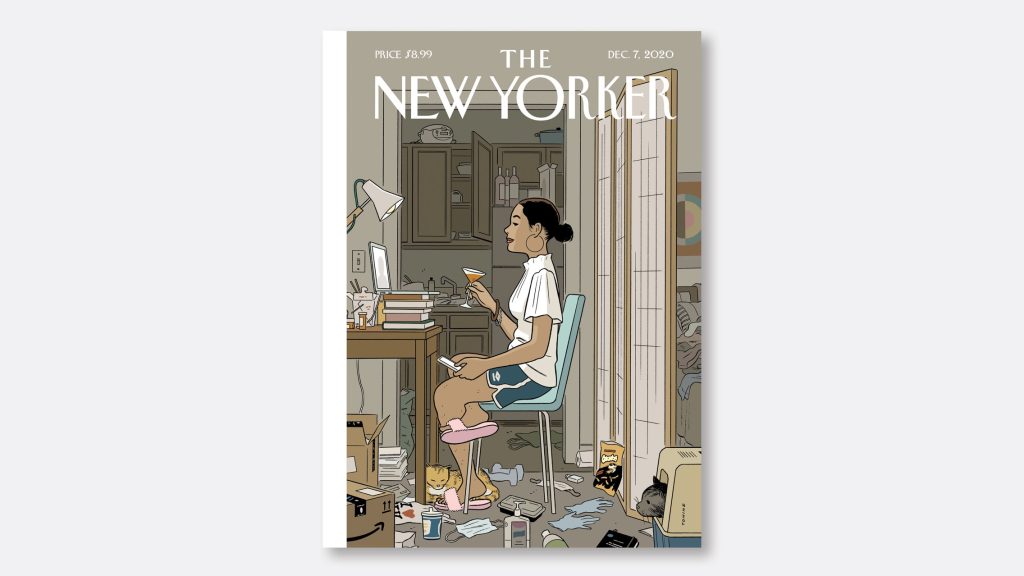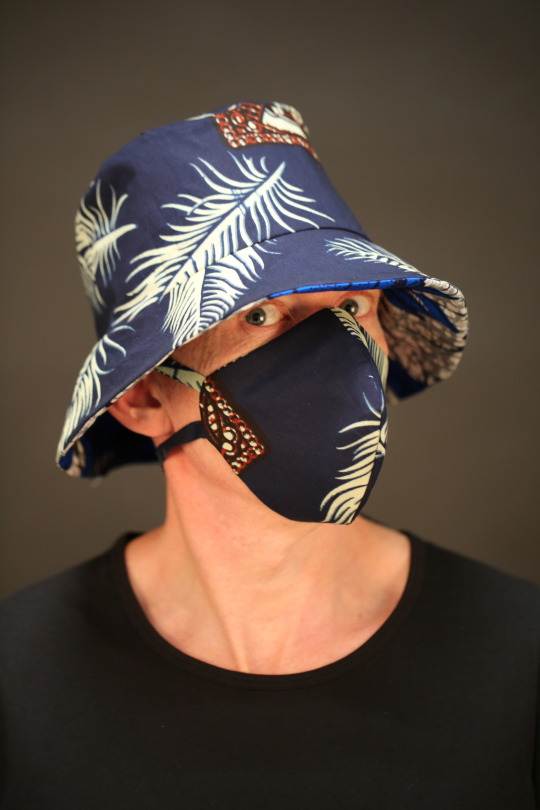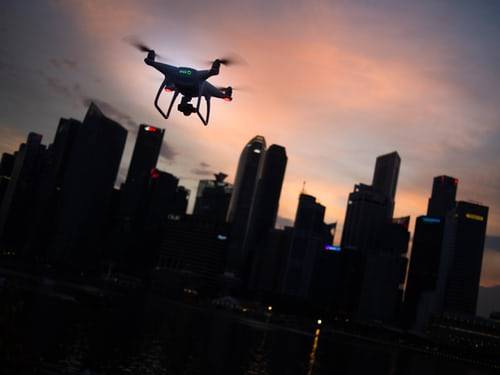By Anneke Smelik

The cover of The New Yorker of 7 Dec. 2020 features a telling cartoon of our daily life during the lockdowns induced by the COVID-19 pandemic: a woman sits in front of her laptop wearing a smart top, her hair in a nice bun, with lipstick and earrings, but underneath she wears sportive shorts showing hairy legs in fluffy slippers. This strange separation between our well-dressed upper parts of our body and relaxed if not partly undressed lower bodies, is so typical of our online lives in front of the camera. Smart from the waist up; relaxed from the waist down. It brings into sharp relief the performative aspect of the way we dress.
In the beginning of the pandemic, during the first lockdown, as teachers we shared slightly embarrassed exchanges about wearing sweatpants or pyjama bottoms that no one could see. Soon enough the internet was abounding with faux pas of people online wearing a suit, shirt and tie, but with their underpants showing when they got up. Teachers and students alike are quite conscious of their screen presence, which reveals only the top part of the body. Makeup and hair matter more, as do tops, while bottoms and shoes matter less and probably stay locked away in the cupboard. Staring at one’s own face among many others during the online meetings and classes requires new make-up and dressing routines. Combining nice tops that are in view with sweatpants for the part of the body that (hopefully) no one can see, reveals that dress is, after all, performative: we dress not only for ourselves but also for others (Smelik & Kaiser, 2020). We dress for the public gaze.
This performative aspect of fashion reminds me of the metaphor of the stage that sociologist Erving Goffman (1959) used to characterize presentations of self as performances in everyday life. As Efrat Tseëlon (2016) has shown, the theatrical metaphor of performance is particularly apt for the study of clothing and appearance. Goffman’s notion of a ‘front region’, the social role that people adopt in society, versus the ‘back region’, where people relax their looks and behaviour, is intimately connected with the ways we dress. The staged, edited and filtered selfies that we put on Instagram or Facebook are clearly intended for the ‘front region’, whereas we are usually reluctant to upload snapshots from the ‘back region’ when we lounge on our couch in a track suit without any make up on. Translating Goffman’s terms to the digital age of Zoom, Teams, virtual classrooms, and other digital meetings, perhaps we can better talk of an ‘upper region’ and a ‘lower region’! Now, the upper region of our body remains out there up front, while the lower part of the body can relax into the invisible back region.
Clothes are an important part of ‘impression management’, as it has come to be known. In the presence of others, Goffman argues, individuals will try to influence the situation by presenting themselves in a favourable light. In this respect, Goffman makes a difference between the impression that people give intentionally and the impression that they give off unintentionally. We may dress very carefully to make an impression for a Zoom meeting by doing our hair and applying makeup, putting on a nice top and jewellery, but may give off quite a different impression by getting up in haste showing a pyjama bottom, or worse, underwear. Our online lives are still sustained by normative expectations and tacit rules of embodied presentation: the performance goes on, even if the camera reduces us to ‘talking heads’.
I am probably not the only one who misses wearing (and showing off) beautiful shoes, and who is slightly fed up with wearing Uggs, however comfortable at home. It cannot be any coincidence that fashion designers have come up with ‘Zoom fashion’, focusing on the ‘waist-up’, with detailed necklines and relaxed trousers (Criddle, 2020). We may not be able to afford such expensive brands, but I have come across a fun solution for Zoom fashion: the work-at-home sweater that looks like a business suit. This certainly helps to create the right impression management. So, while the lockdown lasts, I will try to keep my desire for swirling skirts and smart trousers on hold, and have fun with Zoom fashion by mismatching business-like tops with totally relaxed bottoms.
References
Criddle, Cristina, ‘Fashion brands design ‘waist-up’ clothing for video calls’. BBC News, 20 september 2020. https://www.bbc.com/news/technology-54327987
Goffman, Erving (1959), The Presentation of Self in Everyday Life. London: Penguin.
Anneke Smelik and Susan Kaiser, ‘Performing fashion’. Editorial introduction to Critical Studies in Fashion & Beauty, vol 11 nr 2, 2020: 117-128. DOI: https://doi.org/10.1386/csfb_00012_2
Tseëlon, Efrat (2016), ‘Erving Goffman: Social science as an art of cultural observation’. In Agnès Rocamora & Anneke Smelik (eds.) Thinking Through Fashion. A Guide to Key Theorists. London: Bloomsbury, 149-164.


